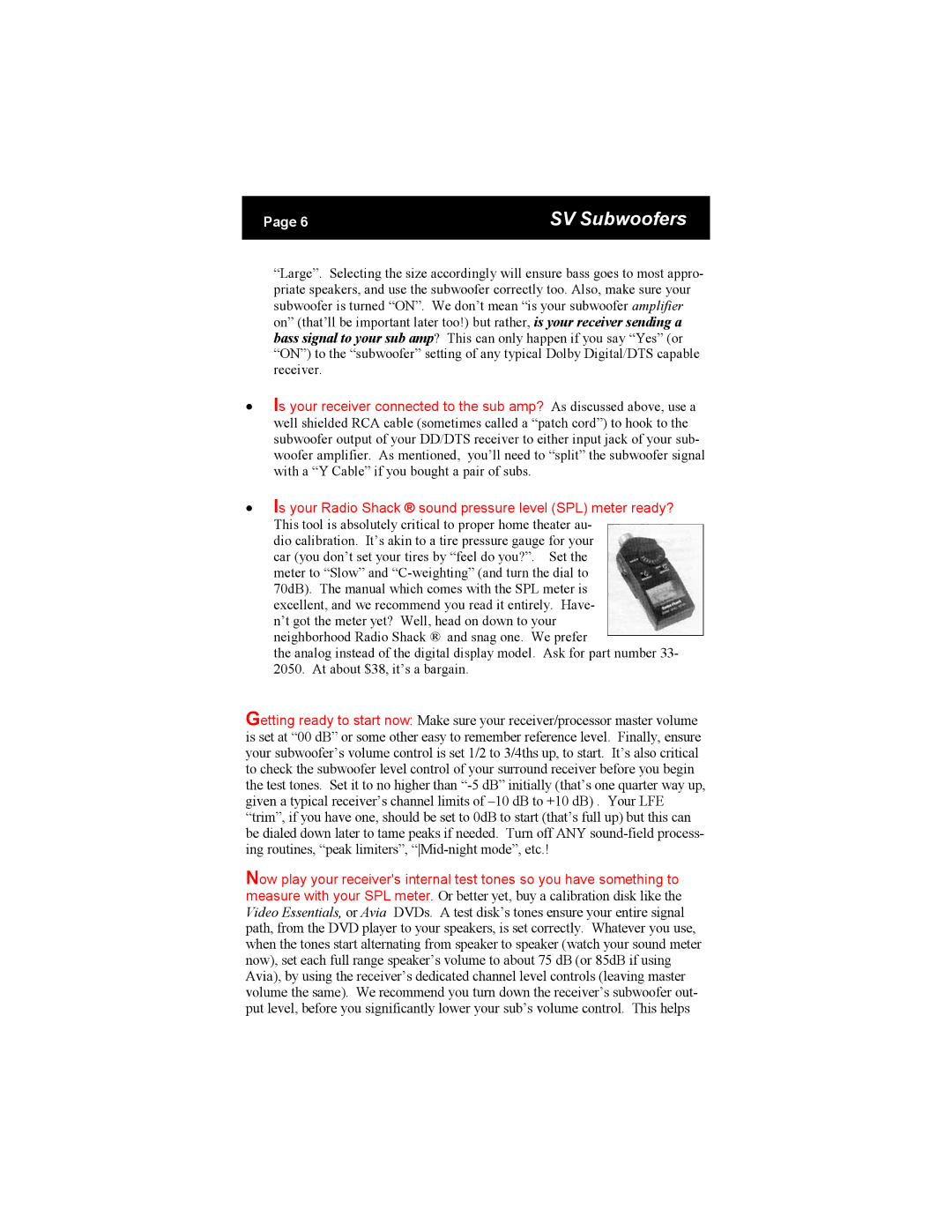
Page 6 | SV Subwoofers |
|
|
“Large”. Selecting the size accordingly will ensure bass goes to most appro- priate speakers, and use the subwoofer correctly too. Also, make sure your subwoofer is turned “ON”. We don’t mean “is your subwoofer amplifier on” (that’ll be important later too!) but rather, is your receiver sending a bass signal to your sub amp? This can only happen if you say “Yes” (or “ON”) to the “subwoofer” setting of any typical Dolby Digital/DTS capable receiver.
•Is your receiver connected to the sub amp? As discussed above, use a well shielded RCA cable (sometimes called a “patch cord”) to hook to the subwoofer output of your DD/DTS receiver to either input jack of your sub- woofer amplifier. As mentioned, you’ll need to “split” the subwoofer signal with a “Y Cable” if you bought a pair of subs.
•Is your Radio Shack ® sound pressure level (SPL) meter ready?
This tool is absolutely critical to proper home theater au- dio calibration. It’s akin to a tire pressure gauge for your car (you don’t set your tires by “feel do you?”. Set the meter to “Slow” and
the analog instead of the digital display model. Ask for part number 33- 2050. At about $38, it’s a bargain.
Getting ready to start now: Make sure your receiver/processor master volume is set at “00 dB” or some other easy to remember reference level. Finally, ensure your subwoofer’s volume control is set 1/2 to 3/4ths up, to start. It’s also critical to check the subwoofer level control of your surround receiver before you begin the test tones. Set it to no higher than
Now play your receiver's internal test tones so you have something to measure with your SPL meter. Or better yet, buy a calibration disk like the Video Essentials, or Avia DVDs. A test disk’s tones ensure your entire signal path, from the DVD player to your speakers, is set correctly. Whatever you use, when the tones start alternating from speaker to speaker (watch your sound meter now), set each full range speaker’s volume to about 75 dB (or 85dB if using Avia), by using the receiver’s dedicated channel level controls (leaving master volume the same). We recommend you turn down the receiver’s subwoofer out- put level, before you significantly lower your sub’s volume control. This helps
